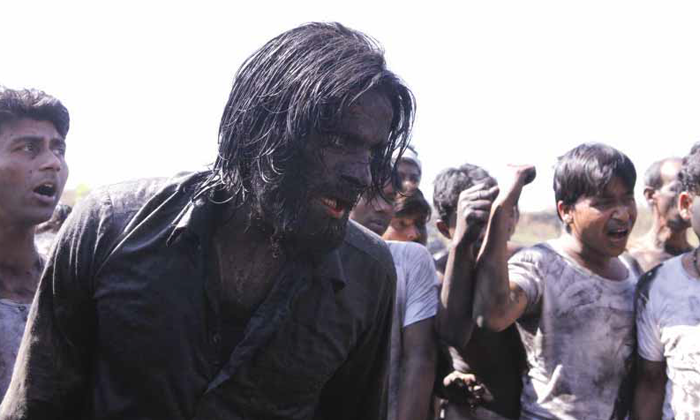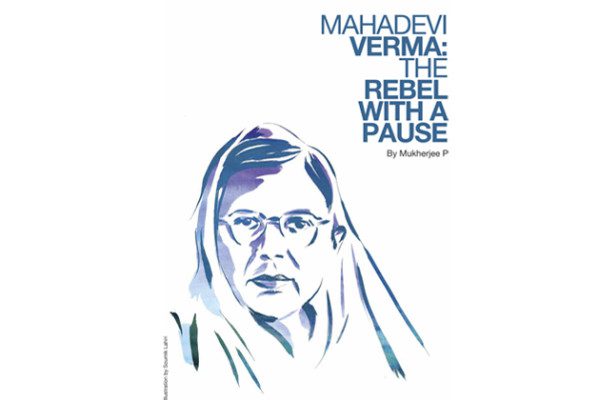What should one say about a feature film where there is superlative acting, which has outstanding production qualities, is incredibly realistic in terms of style and treatment and is, above all, an avant garde work which seeks to depart from typical formulae that are supposed to ensure a movie is not just commercially viable, but also enables the producer to laugh all the way to the bank and back?
What should one say about a film that makes waves in the south of France as a shining paradigm of artistic excellence in a developing country/Third World nation/emerging economy, is lionized for its “boldness” and “creative” exposition of the milieu of small-town India, and lauded for not merely showcasing the amazing talents of non-mainstream participants in the complex act of cinema-making, but also for its brilliant use of tones and textures of light, shade, colour and sound?
What does one say about a “path-breaking” feature film that has almost been without exception, praised in the most fulsome terms by this country’s English-language media and at the same time, panned – if not severely criticized – by large sections of the Hindi press as exaggerated, sensationalised and worse, for displaying an allegedly cavalier attitude with respect to facts in a work of “fiction” that is supposedly based on real-life incidents and people, some of whose progeny are still around to scream aloud: maan-haani or defamation?
“My personal attempts to learn about Dhanbad have made me believe that this latently dangerous and corrupt part of India is, paradoxically and ironically, remarkably free of communal tensions between Hindus and Muslims.”
Despite its apparent brilliance, ‘Gangs of Wasseypur 1’ is deeply flawed. In the name of a gangster film rooted in the black soil of this country, it is rather too red; it depicts too much blood and gore, most of it, in a highly gratuitous and self-indulgent manner. The repeated depiction of violence in its many manifestations ends up becoming grotesquely pornographic and overshadows many positive aspects of the film, including the brilliant performances by relatively unknown actors and its excellent music.
For some ‘Gangs of Wasseypur’ is a film that seeks to “re-define” Indian cinema (read Anupama Chopra in theHindustan Times, 28 June 2012). For others, however, it is crude and crassly-commercial cinema that is far from realistic or relevant. One critic (Jaiprakash Chowbey, Dainik Bhaskar, 26 June) sarcastically commented that the abuses in the film were more “deadly” than the bullets, while the same newspaper published a photo-feature showing apparently tranquil scenes in Wasseypur – where, incidentally, the film was not shot.
Pointing out the sharp contrast in the reactions to the film in the English and Hindi press, Anand Vardhan (writing for The Hoot website, 5 July) perceptively observed: “Dainik Bhaskar views the desperation in the director to weave a larger political tale through gang wars as a juvenile understanding of politics of the region. The evolution of nineteenth century feudal fiefdoms into the inhumanly skewed labour-capital relations of the modern coal mining sector has many complex historical strands to it. The mafia rivalries can only be a footnote to this complex history, not the expansive leitmotif.”
‘Gangs of Wasseypur’, which has been co-written, produced and directed by Anurag Kashyap, is about violent vengeance among criminal gangs operating around Dhanbad in Jharkhand. Dhanbad describes itself as India’s coal capital. The first part of the film begins before India gained political independence while the second part begins from the 1990s. Syed Zeeshan Quadri, who has been credited with having co-written the film with Kashyap, is said to have been born in Wasseypur.
The two films, each running into two and a half hours, were screened as part of the 2012 “Cannes Directors’ Fortnight”. Not surprisingly, the film was given an “adults” certification – since large portions of the dialogues and the depiction of violent scenes will be considered profane and explicit by contemporary Indian standards, which are quite conservative.
A disclaimer: In 2007, this reviewer directed a five-part documentary film series entitled ‘Hot as Hell’ on Dhanbad, which was co-produced by the Public Service Broadcasting Trust. The first two parts were broadcast on Doordarshan with the title ‘Inferno’. Different versions of the film have been screened on other television channels and at various places, including before very senior government officials in Delhi. The film seeks to explain why underground fires – literally and metaphorically – are raging for over a century in and around Dhanbad district. At a literal level, tens of thousands of residents of the town are living on top of a veritable inferno. At a metaphorical level, there are powerful mafia organizations that rule over this region and exploit the underprivileged – by mining illegally, supervising organized pilferage, running extortion rackets and bagging lucrative contracts.
After the film was made, one realised that most Indians know rather little about this crucial sector. Without coal there is no steel and no electricity. The future of this sector and this part of the country is undoubtedly crucial for the future of the country’s economy. In an attempt to appear politically correct perhaps, Gangs depicts the violence that one section of the Muslim community inflicts on another. My personal attempts to learn about Dhanbad have made me believe that this latently dangerous and corrupt part of India is, paradoxically and ironically, remarkably free of communal tensions between Hindus and Muslims. The conflicts are essentially between economic classes, among caste groups and between adivasis and so-called “outsiders”, not between communities.
A few years ago, a person I have never met wrote to me and thereafter, picked up copies of the film saying he was researching the subject for a feature film. I don’t know – and didn’t ask him about – the film. At least two feature films, ‘Kala Pathhar’ and ‘Kalki’ have focussed on Dhanbad, over and above a number of documentaries, notably ‘The Fire Within’ directed by Sri Prakash and ‘Ab Aur Waqt Nahin’ by Abhijoy (Jojo) Karlekar.
I have been travelling to Dhanbad on and off for the last three decades. I am deeply interested in learning about the political economy of energy in general and coal in particular. Not surprisingly, I saw a late-night screening of ‘Gangs of Wasseypur’ with high expectations. To say I was disappointed would be an understatement. Nevertheless, I promise I will see ‘Gangs of Wasseypur – II’ when it is released. This time round, my expectations would be rock-bottom.














